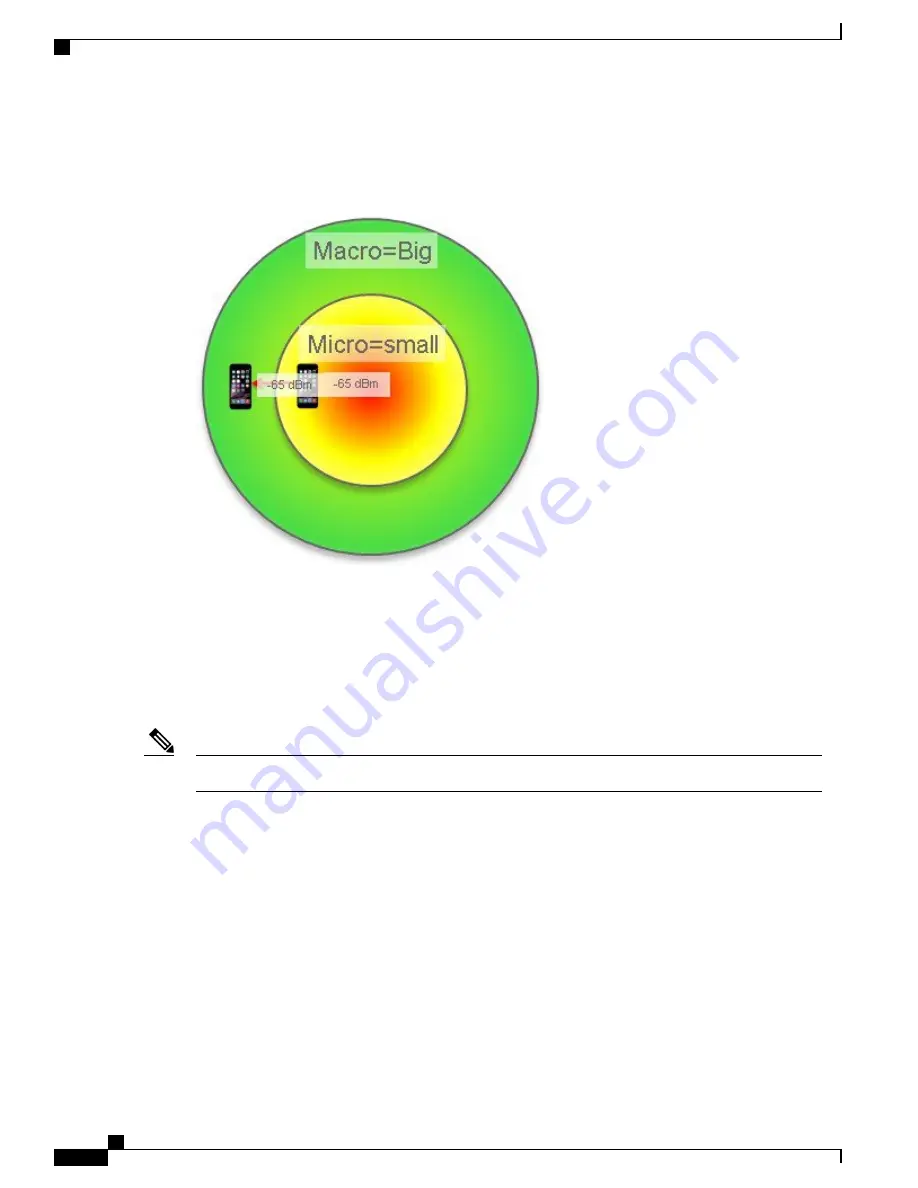
For a non .11V client, the system sends an 11K neighbor list and a disassociate packet.
Figure 31: Intra-cell roaming Micro to Macro cell
Micro and Macro cells on
“
I
”
Series Access Points
The AP 2800i and AP 3800i have integrated antennas and as such, when FRA is enabled and dual 5
–
GHz
operation is selected, only the non-FRA radio can perform the role of a Macro cell or Micro cell. The XOR
FRA radio when enabled for 5
–
GHz must operate using a much lower power and therefore must function as
a Micro cell.
The "E/P" Series with external antennas can operate in any combination of Micro or macro cells.
Note
Prior to FRA technology, access points like the AP 2700 and AP 3700 defined the dedicated radios in software
as Radio 0 (2.4
–
GHz) and Radio 1 (5
–
GHz); if an additional radio like the WSM module was installed in the
AP 3700 the third radio was defined as Radio 2, sometimes called "Slot 2".
Now with FRA, Radio 0 is the 2.4
–
GHz radio *OR* it can be a 5
–
GHz radio; hence the term XOR.
By default the FRA functions as a 2.4
–
GHz radio, so out of the box the AP behaves the same as a conventional
AP 2700 and AP 3700 operating off the dual band Macro cell (large brass colored) antennas on the four corners
in the figure below. Additionally, the non-FRA 5
–
GHz radio also shares the Macro cell antennas.
If you enable the FRA radio from 2.4
–
GHz to 5
–
GHz, the FRA radio can no longer use the Macro cell antenna
on 2.4
–
GHz and automatically switches to another set of four Micro cell antennas. This is done because two
5
–
GHz radios cannot share the same antennas.
The Micro cell 5
–
GHz antennas are designed to co-exist in the near field of the Macro cell antennas with the
following caveats.
Cisco Aironet Series 2800/3800 Access Point Deployment Guide
30
Client Roaming in a Micro and Macro Cell
Micro and Macro cells on
“
I
”
Series Access Points






























